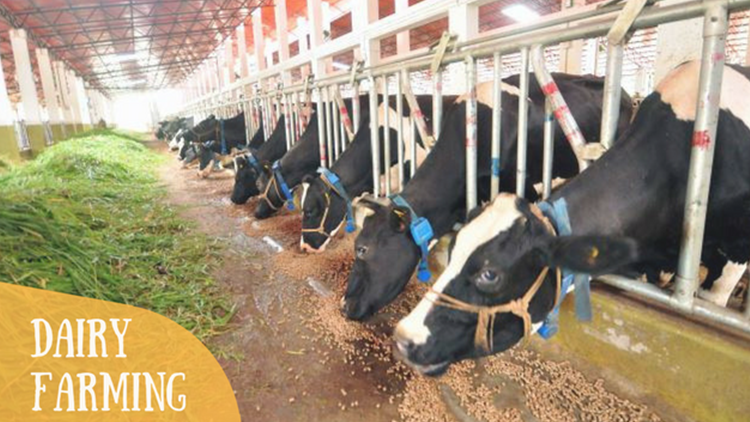Dairy Farming is a vast field of study that requires substantial efforts to make it successful and profitable. No business is good if it doesn’t generate revenues stable enough for you to continue investing in its growth. While dairy farming is a backbreaking job, there’re millions of farmers who’ve been into the dairy industry since ages where their ancestors laid the foundation of the business. They know the tricks of the trade well but also face challenges in nearly all the aspects of dairy farming. We’ve pulled down a few queries faced by almost all the farmers like you, and along are the answers that might clear your doubts.
- Which animal should you start your dairy farm with: Cow or Buffalo?
There’s no precise answer to this question for there are several factors that must be taken into consideration before you choose any animal for your farm. Buffaloes produce more milk than cows. However, the fat proportion in buffaloes’ milk is twice that of cows’ milk. It is why farmers earn more money for buffalos’ milk in the local market. As far as daily milking is considered, milk from a cow can be easily extracted using an automated machine which is difficult in the case of a buffalo. Buffaloes are more muscular, immune, and expensive than the cows. Pregnant cows can be easily identified compared to buffaloes. Therefore, it depends on you which animals you wish to choose for your business. Many farmers prefer buffaloes over cows, but you can also select both and test what works well for you and your farm.
2. What is the Lactation Cycle?
Lactation cycle is the time during which a cow or a buffalo is pregnant. The number of lactation cycles determines the number of times the cow or a buffalo has given birth to a calf.
3. Why is the lactation cycle important?
Lactation is the time during which milch animals secrete milk and feed their calves. Therefore, the milch animals must be inseminated naturally or artificially to begin lactation cycle and produce milk. Animals in their second or third lactation cycle are preferred because they are already acquainted with calving and produce more, better quality milk. The animals that haven’t given birth yet take time to adapt to motherhood which declines the period of milk production.
4. What is a Heat Cycle?
The heat cycle is the time during which a cow or a buffalo is ready to be pregnant again. A heat cycle lasts for 12 to 24 hours during which it mates with a sire naturally or is artificially inseminated with frozen semen of a sire.
5. How to recognize heat cycle?
A cow or a buffalo in heat behaves differently than usual. The symptoms of heat are:
- Mounting Heard-mate
- Discharge of Mucus
- Reddening and Swelling of Vulva
- Bawling, Trudging and Restlessness
- Fluffed-up Hair and Grubby Legs
- Chin Resting and Back Rubbing
- Snuffling Genital and Head Raising
- Reduced Feeding and Milk Production
- Metestrous Bleeding
6. How long after a buffalo gives birth can she get pregnant again?
It depends on some factors like body condition at calving, dam age, and difficulties faced during calving, diet routine, etc. First-calf buffaloes have an extended post-partum period and so do buffaloes who calved out in a body condition of less than 4 (in a scale of 1 to 9), or faced other calving difficulties, or whose body weight and body condition declined post calving. If these conditions are ideal, the postpartum period for buffaloes is between 42 to 50 days with an extension of at least ten days for the first-calvers.
Conclusion
If you think your queries have been answered well here, you can learn more about dairy farm management software at www.promptdairytech.com



